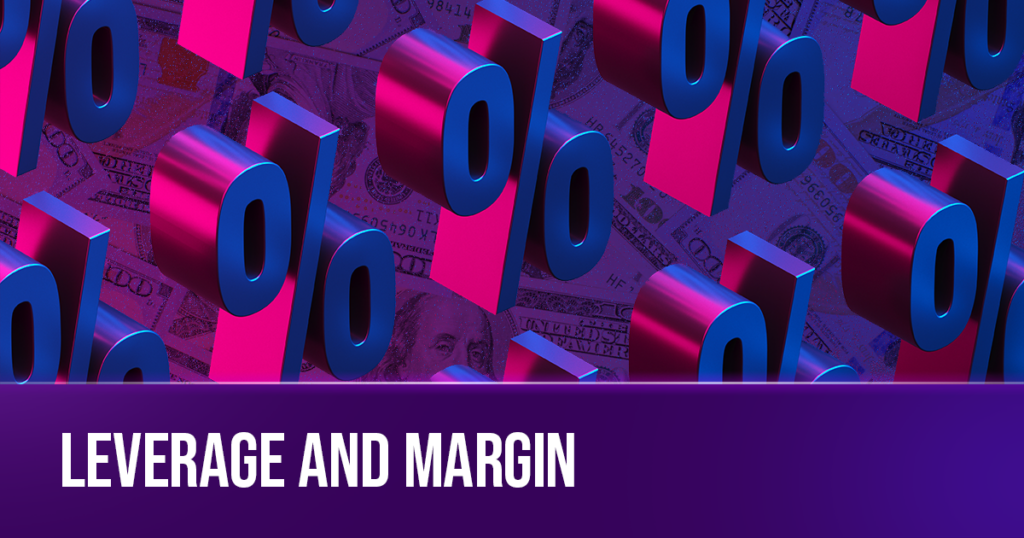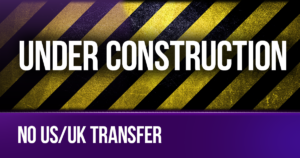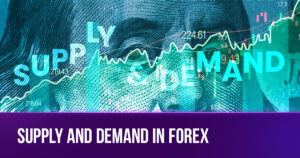Leverage in Forex trading refers to your ability to control larger positions in the market with a smaller amount of capital. By knowing when and how to use leverage in trading, you can potentially generate higher profits as gains are calculated based on the total position size.
In the context of Forex trading, leverage and margin are two important concepts that determine the amount of capital required to open and maintain positions in the market.
How Does Leverage Work in Trading?
Leverage in Forex trading refers to the ability to control a larger position in the market with a smaller amount of capital. For easier understanding, some people say that it’s similar to a loan provided to the trader, allowing them to amplify their trading positions. Leverage is typically expressed as a ratio, such as 1:10, 1:50, or 1:100, indicating the multiple by which you can increase your position size. As to what is the maximum leverage in Forex trading, if you join the True Forex Funds evaluation program for example, your Forex leverage ratio would be 1:100. Remember that gains or losses are calculated based on the total position size rather than the trader’s initial investment.
What is Over Leveraging in Trading?
Though trading with higher leverage will certainly have the heart racing, it’s important to keep in mind that you don’t have to leverage the whole amount. There may be brokers, or even other prop trading firms out there who’ll offer 1:400 leverage.This would allow you to open an account with let’s say $400 and be able to control $160,000 worth of trades. Now, the normal pip size for a trade worth $160,000 would be $16. Now consider how most currency pairs can move in a matter of seconds, then you’re in a dangerous position. A high leverage allows you to gather more profits, but the opposite is also true: with higher leverage, you can also lose more.
Unfortunately, this is one of the few dangers of over leveraging. At True Forex Funds, we always recommend to our traders to exercise caution when trading, and to really learn to develop effective risk management practices. Still, there is a time and place where utilising extra leverage can give you an advantage. One of these is adding to a trade that appears to be progressing well. This is known as leveraging your profits.
What is Margin?
Margin refers to the portion of your capital that’s required to open and maintain a leveraged position. It’s the collateral or “good faith deposit” that the trader must have in their trading account. The margin amount is a percentage of the total position size and is determined by the leverage ratio. For example, if you want to open a $10,000 position with a 1:100 leverage ratio, you would need to deposit a margin amount equal to 1% of the total position size. In this case, the required margin would be $100 ($10,000 * 1%). The remaining $9,900 is provided by another party (e.g. broker, or prop firm) as leverage.
Margin serves as a safeguard for against potential losses. If the market moves against the trader and their losses exceed the available margin, a margin call may be issued, requiring the trader to deposit additional funds to maintain the position or face its automatic closure (known as a “margin closeout”).
Already familiar with leverage and margin?
Get fundedPros and Cons of Leverage in Trading
If you’re thinking about when to use leverage in trading, then first consider the pros and cons.
Benefits of Leverage
Increased Trading Power: Leverage allows you to control larger positions in the market with a smaller amount of capital. A good example is the enhanced capital from True Forex Funds’ program that amplifies your trading power, enabling you to potentially generate higher profits compared to trading with only your own funds.
Enhanced Profit Potential: By magnifying the position size, leverage has the potential to amplify gains. Even small price movements in the market can result in significant profits when using leverage. This can be attractive if you’re seeking higher returns on your investments.
Diversification Opportunities: With leverage, you can diversify your trading strategies and exposure to various currency pairs. You can allocate capital across multiple positions, potentially spreading your risk and taking advantage of different market opportunities simultaneously.
Risks of Leverage
Increased Losses: While leverage can enhance profits, it also amplifies losses. If a trade moves against you, losses are multiplied by the leverage ratio. Even a small adverse price movement can lead to significant losses, potentially exceeding the initial investment and resulting in substantial financial damage.
Higher Risk of Capital Depletion: The higher the leverage ratio, the greater the risk of depleting the trading account. Excessive leverage, especially when used without proper risk management, can lead to rapid and significant capital loss. You need to be cautious and use leverage in a disciplined manner, considering your own risk tolerance and employing appropriate risk management strategies.
Market Volatility: Leverage can be particularly risky in highly volatile market conditions. Increased price volatility raises the likelihood of sharp price swings, thereby increasing the potential for significant losses. You should always exercise caution and consider adjusting your leverage levels during periods of high volatility.
What is Leverage Ratio?
Leverage ratios in trading represent the proportion between the trader’s capital and the total position size they can control. They determine the amount of leverage provided by the broker. Leverage ratios are crucial as they dictate the level of trading power, potential profits, and risks you’re able to undertake.
Finding the Perfect Leverage Ratio in Trading
When selecting the appropriate leverage ratio in Forex trading, consider your risk tolerance and trading objectives. If you’re wondering if high leverage is good in Forex trading, keep in mind that higher leverage ratios amplify both profits and losses. So if you have a low risk tolerance, consider using lower leverage to minimize potential losses. It’s also equally important to define your trading goals. If you aim for quick, short-term profits, then higher leverage may be suitable. Conversely, if you prioritize long-term stability and capital preservation, then lower leverage is recommended.
Another factor is to consider the size of your trading account. You’ll find that smaller accounts are more vulnerable to substantial losses with high leverage. To that end, you should adjust the leverage ratio accordingly to protect your capital. It’s a given that different trading strategies require different leverage ratios. For example, scalping strategies may benefit from higher leverage for frequent trades, while swing or position trading may require lower leverage for long-term positions. Last but not least, take the time to analyze market volatility. You’ll find that higher volatility increases the risk of large price swings.
Using leverage can be advantageous for Forex traders in various scenarios including allowing them to control larger positions with smaller capital investments, thereby maximizing their trading power and potential returns. Those of you scalping and day trading with short-term trading strategies may benefit from higher leverage to take advantage of small price movements and generate quick profits. Finally, we should mention high-conviction trades. This is when you have a strong conviction about a trade setup or market opportunity. In these situations, using leverage can amplify potential gains and improve overall profitability.
A prop firm like True Forex Funds gives you the chance to get evaluated and test your skills, without risk, in real market conditions. This will give you a better understanding of how to utilize leverage to help implement successful trading strategies. Even better, once the evaluation challenges are over, you’ll get the chance to trade with enhanced capital pools of $200,000 with a leverage of 1:100.
Ready to get started with True Forex Funds?
Get fundedHow To Balance Leverage With Effective Risk Management
To help stay one step ahead of the competition, it’s necessary to continuously monitor your trades, account balance, and market conditions. The general idea is to strike a balance between utilizing leverage to enhance profitability while effectively managing the associated risks. So it’s crucial to remain disciplined, follow a well-defined trading plan, and adapt risk management strategies as market conditions evolve. Below are some effective techniques to help you maintain control.
Stop-Loss Orders: Implementing stop-loss orders is vital. After all, these predetermined price levels automatically close a trade if the market moves against you. It limits losses as well as protects your capital.
Position Sizing: Properly sizing your positions based on your risk tolerance and account size is essential.
Diversification: Diversifying can help balance potential losses and gains, as different currency pairs, or other instruments, may move independently of each other.
Trading Plan: You should try to develop a solid trading plan that outlines your objectives, risk tolerance, entry and exit strategies, and risk management rules. Then stick to your plan consistently, being sure to avoid impulsive or emotional trading decisions.
Discipline: Always maintain a disciplined outlook and stick to your trading plan. Emotional discipline is essential for managing margin and leverage in Forex trading effectively.
Conclusion: How to Calculate Leverage in Forex Trading
It’s essential for Forex traders to develop a comprehensive understanding of leverage and its implications. As previously mentioned, while leverage can amplify profits, it also magnifies losses. Therefore, it’s crucial to balance leverage with effective risk management, thereby letting you navigate the Forex market with greater control and minimize the potential impact of volatile price movements.
Without a doubt, the True Forex Funds evaluation program is one of the best methods to gain hands-on experience and an understanding of the importance of leverage in trading. Remember: knowledge, preparation, and a disciplined approach are key to successful trading in leveraged environments.
See our 1:100 leverage in action
Get fundedFAQs
What is leverage in Forex trading?
In a nutshell, it’s the ability to control a larger position in the market with a smaller amount of capital. It allows you to amplify their trading power and potential returns. Leverage is provided by the broker and is expressed as a ratio, such as 1:100, indicating the multiple by which you can increase your position size.
How does leverage work in Forex trading?
Leverage works by allowing you to control larger positions in the market than your available capital. When you open a leveraged position, you are essentially borrowing funds from the broker to increase their position size. The leverage ratio determines the amount of borrowed funds and the capital required as a margin, while gains or losses are calculated based on the total position size. This amplifies both your potential profits and losses, making leverage a powerful tool that requires careful risk management.
Is leverage good or bad in Forex trading?
In truth, this can be both good and bad. It all depends on how it’s utilized. On the one hand, it can amplify potential profits and enable you to control larger positions with a smaller capital investment. However, high leverage also increases the risk of significant losses, making it crucial that you exercise responsible risk management and are certain that you have a thorough understanding of the potential risks involved.
How can I manage the risks associated with leveraged trading?
To manage the risks associated with leveraged trading, you should employ effective risk management strategies. This might include setting proper position sizes, utilizing stop-loss orders to limit potential losses, diversifying trades across different currency pairs, and following a well-structured trading plan. Additionally, maintaining discipline, staying informed about market conditions, and regularly reviewing and adjusting risk management techniques are crucial for managing risks effectively.
Is leverage trading legal in the US?
Yes, leverage trading is legal in the United States. However, it’s subject to regulations imposed by regulatory bodies. These include the Commodity Futures Trading Commission (CFTC) and the National Futures Association (NFA). Their regulations have limitations on maximum leverage ratios, margin requirements, and other investor protection measures.
What is the difference between leverage and margin in Forex trading?
In Forex trading, leverage and margin are related concepts but have distinct meanings. Leverage refers to the ability to control larger positions in the market with a smaller amount of capital. While margin represents the portion of your capital that is required to open and maintain a leveraged position. In other words, leverage is the ratio by which the position size is amplified, while margin is the collateral or “good faith deposit” that you must have in your account to support the leveraged position.




